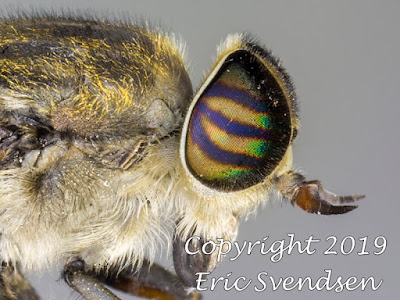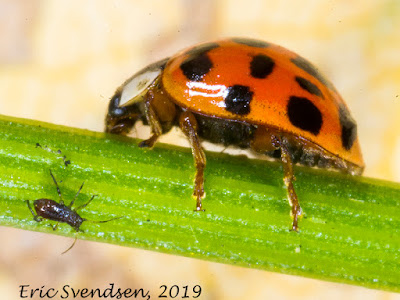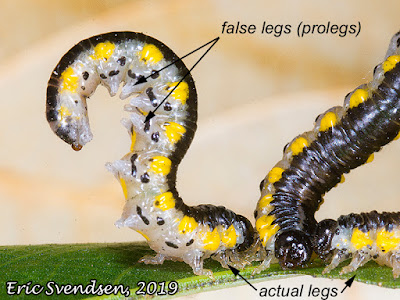Profile of a horsefly
 |
| Horsefly photographed from the side using bellows and reversed 50 mm lens. |
Horseflies lay eggs in the late summer, after participating in Dracula's pastime and having mated with the non-parasitic males. The eggs are laid in a raft like structure on a plant suspended above the water. The newly hatched larvae fall into the pond or stream and begin the process of growing. Where they live and what they eat are quite dependent upon the species, but they all require an aqueous or damp environment. They grow over the rest of the summer and fall and overwinter until the spring. They will burrow into benthic sediments where they find sustenance in the form of other invertebrates.
It is in late spring or even summer that they undergo their final molt and pupate. This is usually done in a dryer area. The pupa matures after about a week or so and becomes the adult. The photo above is of the female; you can tell the difference between the two sexes by the position of the eyes; females have the eyes slightly apart while the males' compound eyes are actually touching.
I photographed this specimen using a bellows with a reversed 50 mm lens. It was stopped down to f/22 when I took the photo. I used a LED ring light attached to the forward facing back end of the lens. Shutter speed was 1.3 seconds with an ISO of 250. The background is white (grey) because I placed a paper plate behind the subject to produce some contrast. I have several shots of the subject from different angles, but I like this one the best because of how the eyes appear. All horseflies and deer flies have multicoloured eyes, not that you would ever take the time to notice them if one was trying to bite you.



Comments
Post a Comment